Hair Cells and Angular Acceleration in the Vestibular System
I. Hair Cell Structure and Function
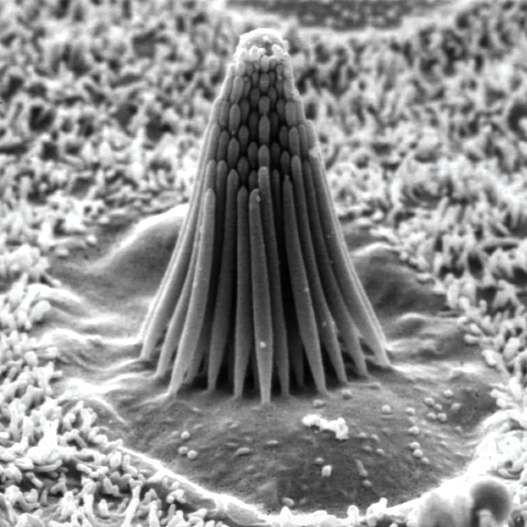
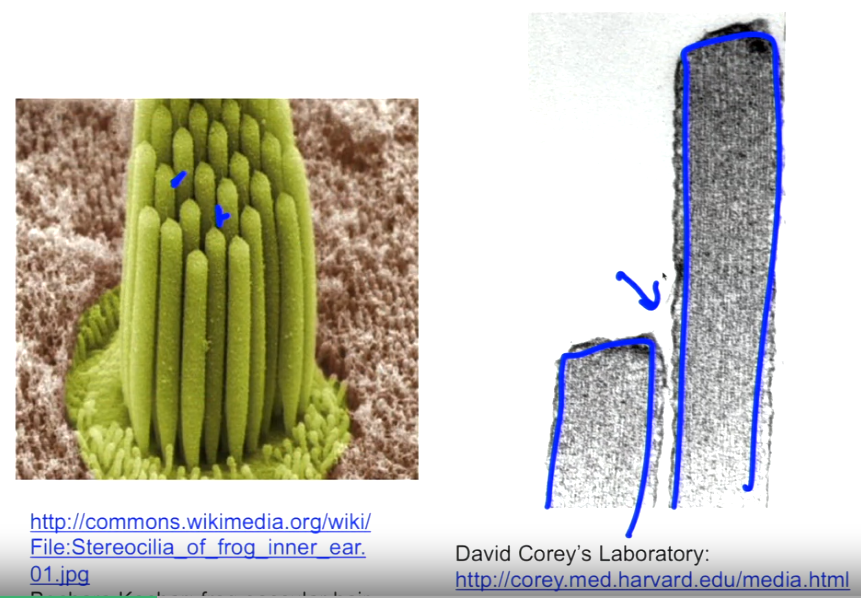
- Hair cells in the vestibular system are similar to those in the cochlea, but with a denser bundle of stereocilia.
- Stereocilia range from short to tall, with the tallest called the kinocilium.
- Tip links connect stereocilia and open channels when pulled.
- Bending the stereocilia bundle towards the kinocilium excites the hair cell (channels open, ions rush in).
- Bending the bundle away from the kinocilium inhibits the hair cell (channels close).
- Movement perpendicular to the stereocilia has no effect.
II. Hair Cell Response and Preferred Direction
-
Hair cells have a resting discharge at -40 mV (higher than most neurons) to sense movement in both directions.
-
Pushing the stereocilia bundle in the preferred direction excites the cell.
-
Pushing the bundle in the opposite direction inhibits the cell.
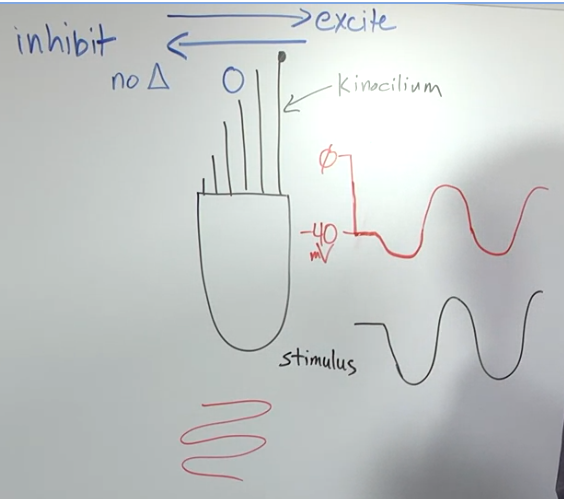 III. Semicircular Canals and the Cupula
III. Semicircular Canals and the Cupula -
Semicircular canals are fluid-filled tubes that detect angular acceleration.
-
Each canal has a single area with hair cells oriented in the same direction (preferred direction).
-
The cupula is a gelatinous membrane within the canal that is pushed by the fluid.
-
Movement of the cupula in the preferred direction excites the hair cells.
-
Movement in the opposite direction inhibits the hair cells.
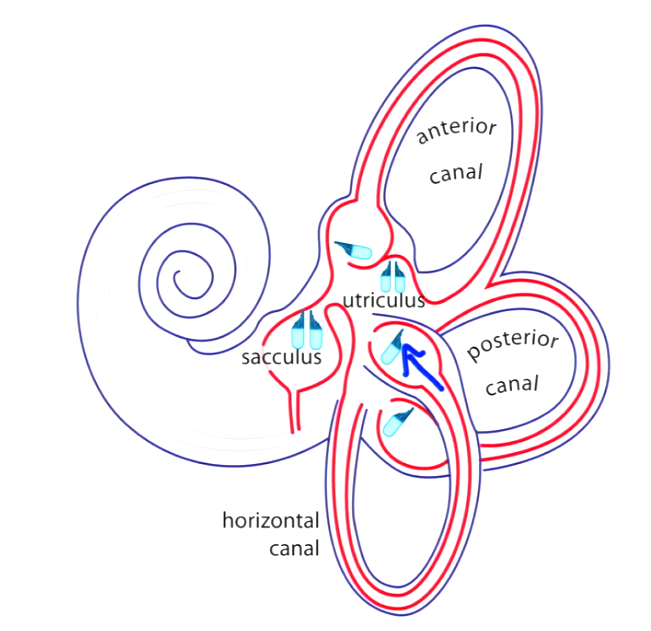
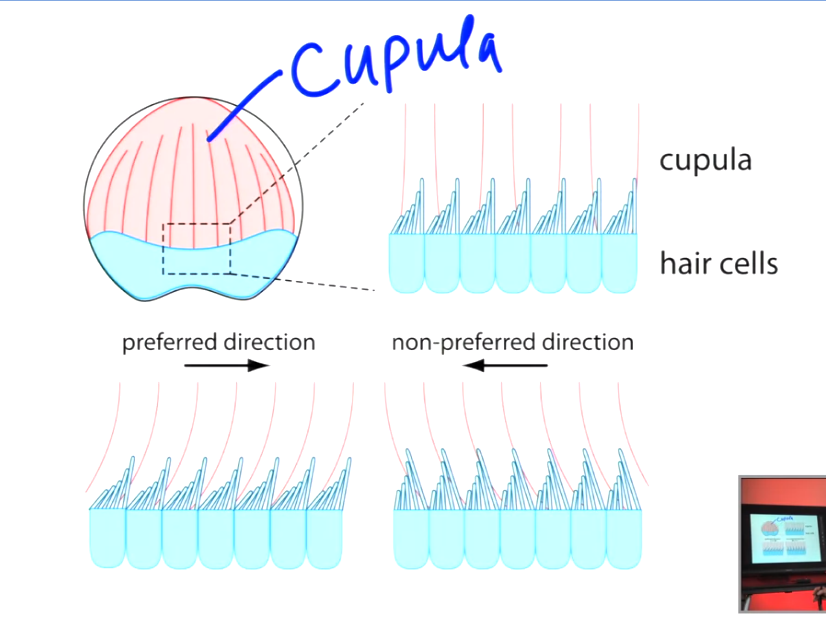 IV. Next Steps
IV. Next Steps -
The lecture will explore how pairs of vestibular end organs work together.
Additional Notes
- The horizontal canal is used as an example due to its simplicity.
- Other canals have different hair cell orientations. Yoked End Organs